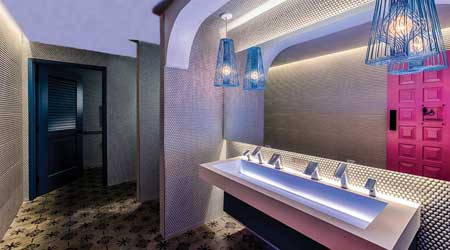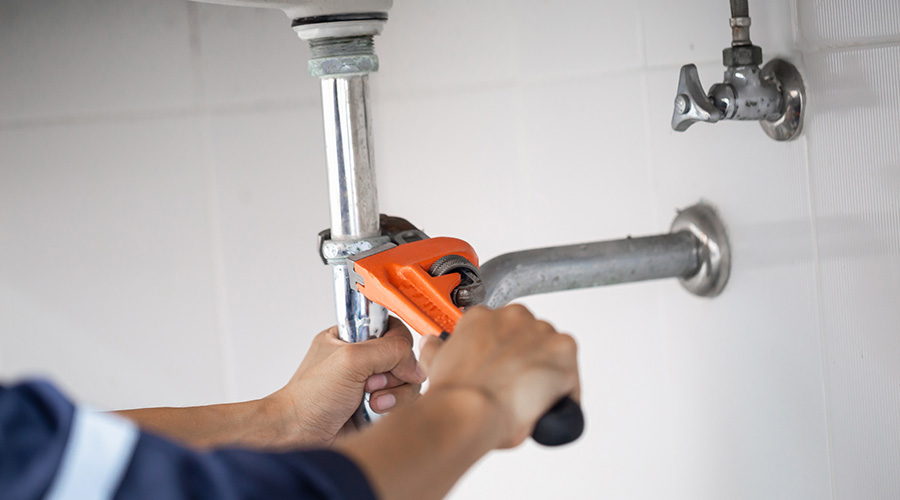 Carefully consider the lighting scheme in restrooms — it should be inviting but also functional. Credit: Rey Lopez
Carefully consider the lighting scheme in restrooms — it should be inviting but also functional. Credit: Rey LopezLooking at Long-Term Restroom Design Changes
Lighting, traffic flow, and restroom positioning are all design strategies bound to change for the better in the restroom of the future.
Lighting levels are also very important in the design and overall restroom experience. Traditionally, in most commercial or institutional buildings, lighting that is either too bright or too dim has a negative impact so finding that perfect balance is very important.
“Restroom lighting should be inviting, but it has to be functional,” stresses Robinson. Especially with this current pandemic, Shove-Brown agrees that facility managers assess their current lighting and opt for brighter-than-usual bulbs or more lighting fixtures.
“We used to focus more on providing the appropriate amount of light that is flattering when one looks in the mirror,” he says. “This was typically accomplished through the use of warm, dim lighting with slightly pink hues that make everyone’s skin tone look healthier or naturally blush. However, now we need bright lighting in high-touch areas like restrooms so that occupants can see all of the surfaces and fixtures are as clean as possible. A darker restroom is an opportunity to not clean as often as you should and will therefore contribute to an increased risk of COVID-19 spread.”
Long-term design changes
Motion sensors and bleachable surfaces will undoubtedly be the most prevalent features of commercial restroom design for the foreseeable future, some elements of which were already part of common, functional design practices leading up to the coronavirus pandemic. Restrooms are typically programmed at the core of a building for multi-level plumbing purposes, but this standard positioning can make it challenging to overhaul the layout. In these cases, retrofitting existing spaces to meet new standards is the way to go, say Ventker and Robinson about the short-term changes to prioritize.
However, there are additional long-term adjustments facility managers should consider that further expand on the concepts of privacy, cleanliness and comfort. Robinson confirms that flow and space planning is key to the commercial restroom experience. In fact, Tracz says he anticipates that while significant space planning changes might not need to take place right away or be a practical investment for many facilities, “there will be times and ways to figure out fewer doors at some point, such as a labyrinth opening in the place of where doors would typically be.”
For those facility managers who are ready or in a position to fully renovate or build a brand new restroom, the designers suggest additional space planning and flow questions: How many restroom stalls will there be? Where will people wait in line to use the restroom? What will they be looking at while waiting? Is there enough separation between the sink and the toilet fixtures? How are we addressing privacy needs so patrons don’t feel stacked on top of each other?
Although the coronavirus pandemic has fundamentally altered restroom design and maintenance in commercial and institutional facilities, architects, designers, and facility managers have a number of short-term and long-term strategies they can implement to make their restrooms safer. Most importantly, these thoughtful solutions can play an important role in eliminating distrust or doubt some might have felt about returning and using these public spaces and amenities.
Shove-Brown adds, “Don't underestimate the restroom. While restrooms may not account for much of the total building cost, they do put nearly all of the occupants either at risk or at ease depending on how well the design, materials, fixtures, lighting, and layout have been thought through."
Related Topics:












